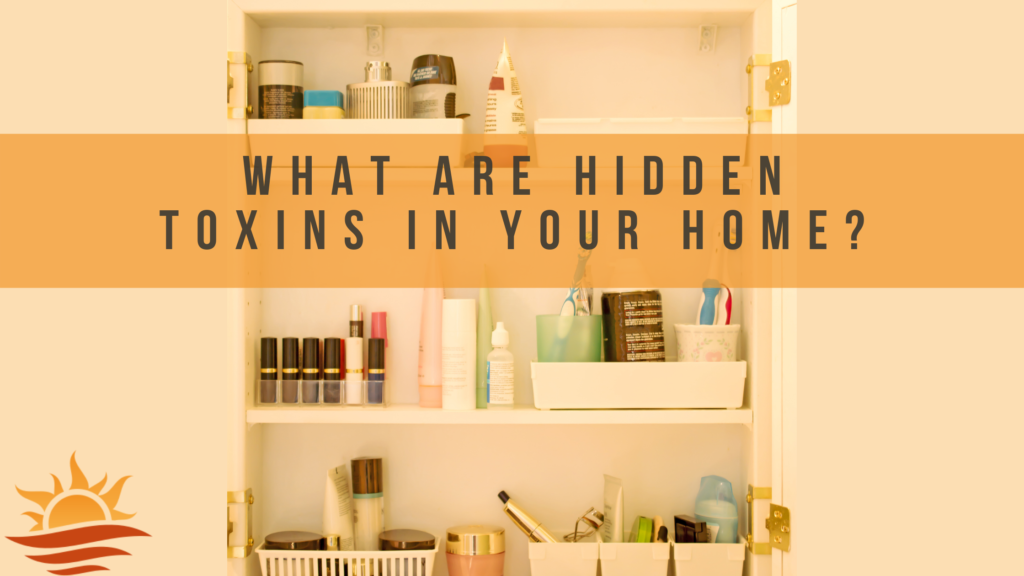Do you have unexplained hives, itchy skin, a rash, or flaking and peeling skin? Your personal care products, such as makeup, lotions, or soaps may be the cause.
Did you know the FDA does not substantiate the safety of ingredients in personal care products in the U.S.? Per the FDA, personal care products are considered cosmetics, and “companies and individuals who manufacture or market cosmetics have a legal responsibility to ensure the safety of their products. Neither the law nor FDA regulations require specific tests to demonstrate the safety of individual products or ingredients. The law also does not require cosmetic companies to share their safety information with FDA.” 1
Many personal care products contain ingredients such as “fragrance,” “scent,” or “parfum.” Sounds harmless, right? However, these harmless sounding ingredients contain approximately 4000 unlisted chemicals. Because of a loophole in the Federal Fair Packaging and Labeling Act of 1973, companies do not have to disclose the individual components of “fragrance” because they are considered “trade secrets.”
Therefore, companies hide these potentially dangerous chemicals from consumers so we cannot make informed decisions on personal care products we use every day.
We absorb the chemicals into our bodies when we apply the products to our skin, or breathe them into our lungs when sprayed into the air. Do you trust the companies to ensure the safety of these products without FDA approval?
So, what are hidden toxins in your home and how can we reduce our exposure?
Examples of hidden toxins in your home
Synthetic fragrances
Fragrances are in everything! Everyone wants to smell good all the time. For example: hand sanitizers, shampoo, lotions, body wash, toothpaste, cologne, nail polish, hairspray, hair styling products, hair color, deodorant, cosmetics, lipstick, soaps.
However, manufacturers do not have to disclose the chemicals in synthetic fragrances that cause allergies, rashes, irritation and more.
Parabens
Parabens prevent contamination of bacteria and mold in personal care products. According to the European Commission’s Scientific Committee on Consumer Products, longer chain parabens like propyl and butylparaben and their counterparts, isopropyl, and isobutyl parabens, may disrupt the endocrine (hormonal) system and cause reproductive and developmental disorders. This research study found links to parabens and breast cancer.
Phtalates
Phthalates keep personal care products such as nail polish soft and flexible. The most common one is diethylphthalate (DEP), used as a solvent and fixative in fragrances. They are known to cause endocrine disruption, headaches and respiratory problems. As part of “fragrance”, the manufacturers do not have to list the individual ingredients on the label.
How to reduce exposure to hidden toxins in your home
Be a wise consumer and read ingredient labels
- Avoid any product with “fragrance,” “scent,” or “parfum.”
- Use fragrance free products whenever possible.
- Avoid anything with phthalate in the name, such as diethyl phthalate (DEP).
- Look for dibutyl phthalate, or DBP, in nail polish, often used to make nail polish chip-resistant. Find safer alternatives here.
- Avoid any product with ingredients ending in “paraben.”
- Look for paraben free and phthalate free on labels, but read the ingredients to verify claims on the front label.
- Rely on essential oils (not fragrance oils), herbs, spices, or plant extracts for scented products.
Consult the EWG Skin Deep Database
The Environmental Working Group maintains a database of personal care products, called EWG’s Skin Deep. They rate products 1 to 12, where 1 is the best and 12 is the worst. Search for safer products, or find out how your favorite products rate.
Sometimes highly rated products on their EWG Verified list (rating=1) are more expensive or not readily available in stores. However, I use Aveeno Fragrance free body lotion (rating=2) and Avalon Organics Shampoo (rating=1, EWG Verified) which are both available in stores and on Amazon at a reasonable price.
Support retailers who uphold ingredient safety and transparency
Better options exist. Check out three companies I recommend.
First, Whole Foods Market bans 180 ingredients from their beauty and body products, including parabens, phthalates, oxybenzone, and PFAS.
Next, Unilever USA pledges ingredient transparency. They provide smart label technology with a smart phone app called SmartLabel. Scan the UPC of the product with the app and get a full list of ingredients, including details on “fragrance.” You can also search for products on their website.
Their personal care brands include: Axe, Dove, Lifebuoy, Noxema, Lever2000, Degree, Vaseline, Sunsilk, Suave, Seventh Generation, and TRESemme. See the full list of brands here.
Approximately 30 companies take part in SmartLabel for Consumers, including Colgate-Palmolive and P&G. Hopefully, more companies will pledge to support ingredient safety and transparency.
Last, I recommend Wellnesse, from Wellness Mama (referral link). Their haircare products are EWG Verified and they list all other product ingredients on their website.
The Wellness Mama website contains many recipes to make your own personal care and cleaning products. My lips reacted to chemicals in many brands of lip balm, including Burt’s Bees, until I started making my own with this recipe.
Conclusion
Reduce our overall exposure to hidden toxins by reading ingredient labels, buying fragrance free products, and searching online for alternatives.
Read the ingredients in your personal care items in your bathroom. Is there one or two you might replace with safer and healthier options?
Reference
- FDA Authority Over Cosmetics: How Cosmetics Are Not FDA-Approved, but Are FDA-Regulated.U.S. Food and Drug Administration, 2 March 2022. Accessed 11 May 2022. https://www.fda.gov/cosmetics/cosmetics-laws-regulations/fda-authority-over-cosmetics-how-cosmetics-are-not-fda-approved-are-fda-regulated.
Any information on this Website is provided for educational purposes only and is not intended as a substitute for the advice provided by a healthcare professional. You should not use the information on this Website for diagnosing or treating a health problem or disease or prescribing any medication or other treatment. You should always speak with a healthcare professional before taking any medication or nutritional, herbal or homeopathic supplement, or adopting any treatment for a health problem. If you have or suspect that you have a medical problem, promptly contact a healthcare professional.



